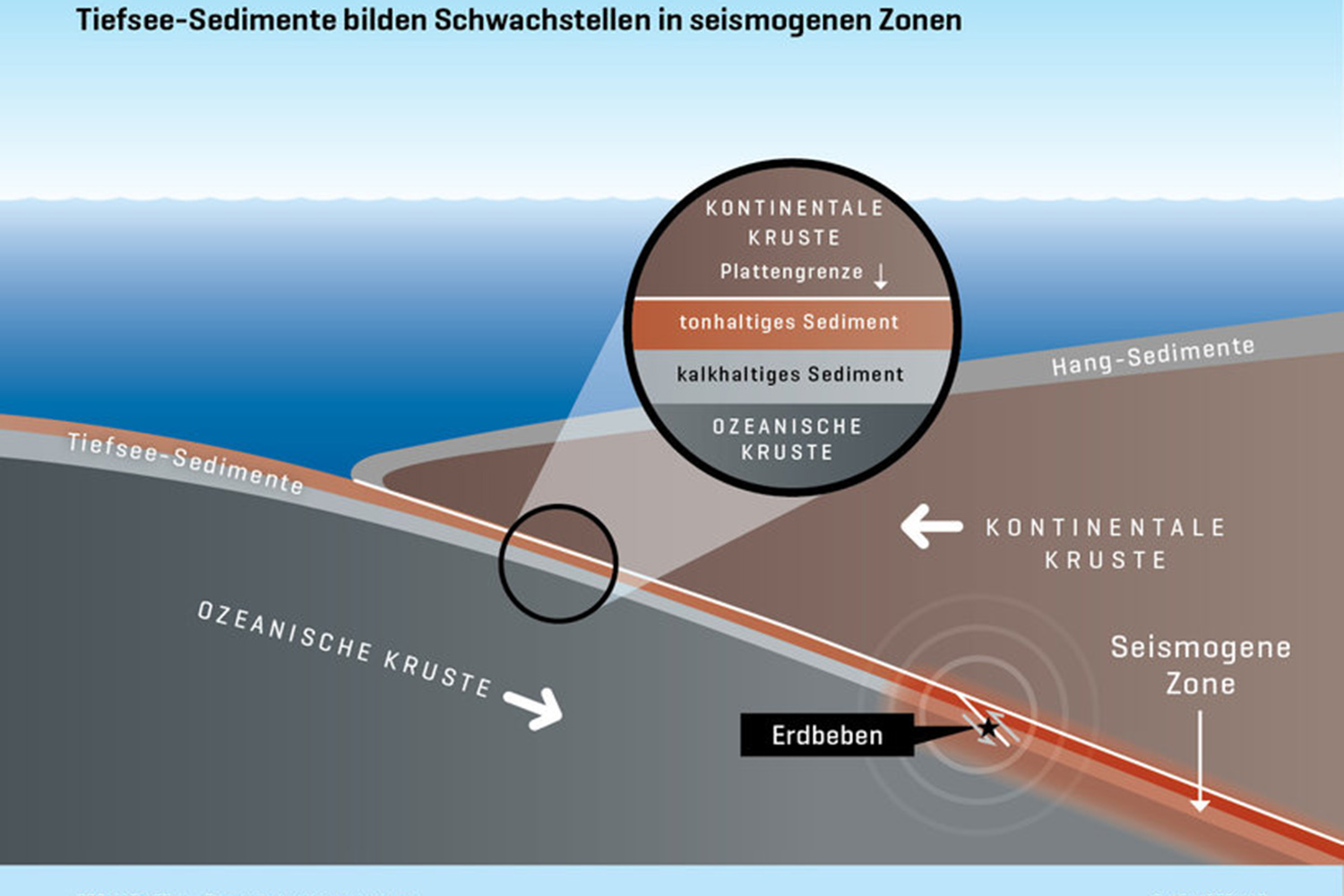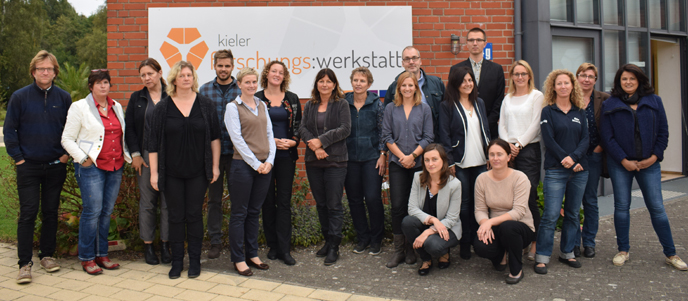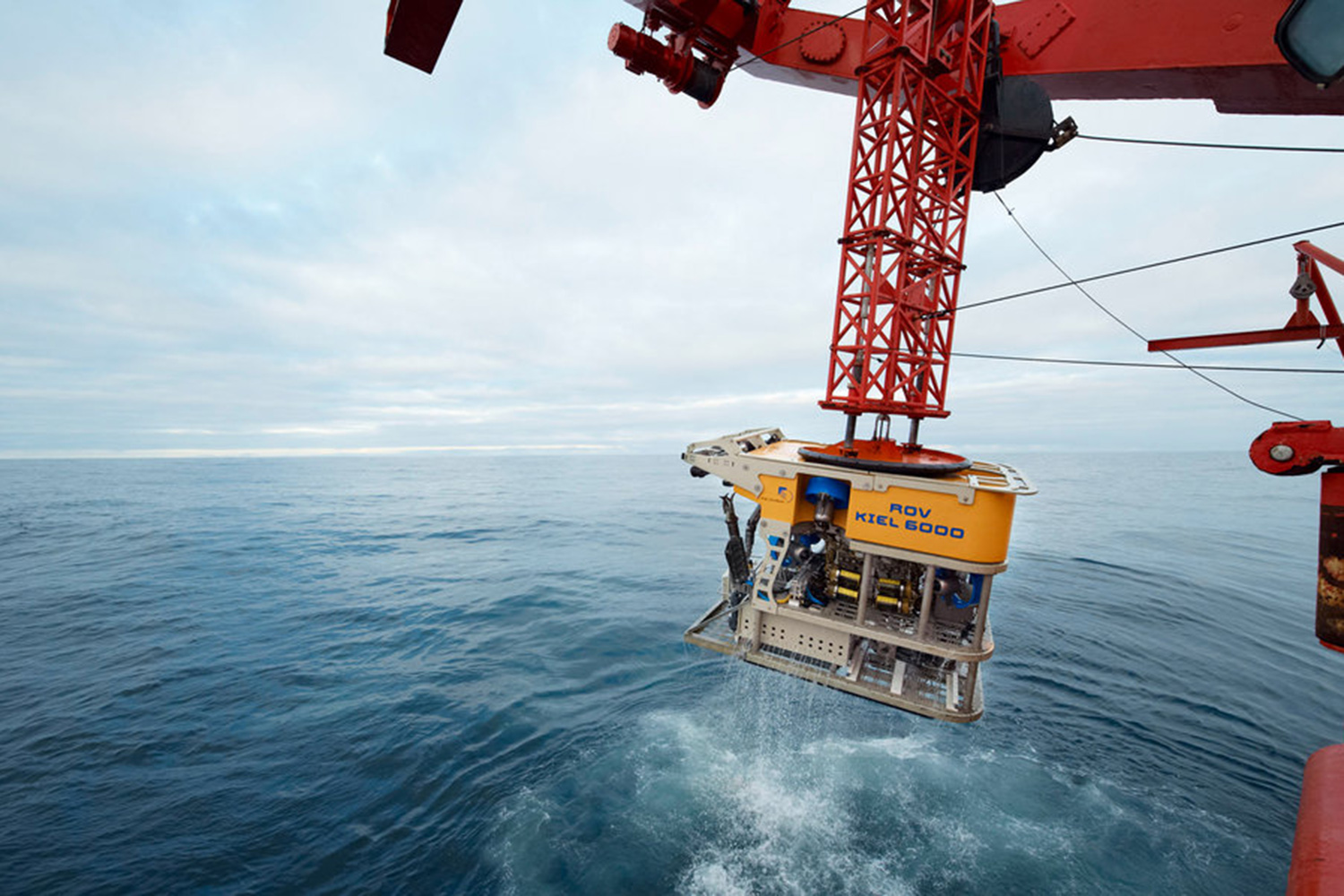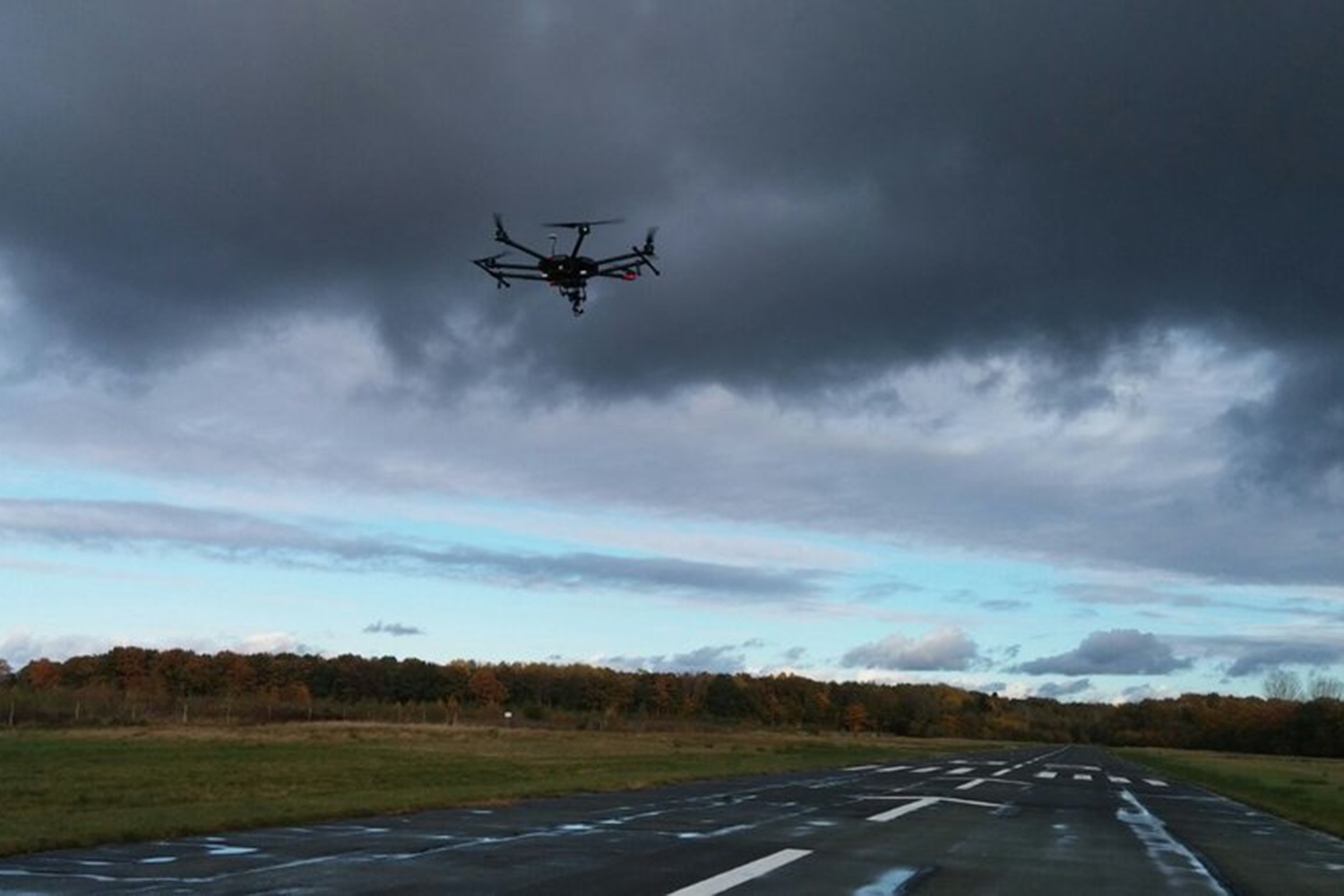The effects of earthquakes are often severe and highly visible. They can destroy homes, cause slope slides and trigger tsunamis. The main cause is the tension that builds up in the Earth's interior when two tectonic plates converge. But even the worst earthquake starts out very small somewhere with the first crack in a rock, from which a large fraction can develop. Until now the assumption was that the initial cracks which resulted in earthquakes were mainly in argillaceous sedimentary rocks. Scientists at the GEOMAR Helmholtz Centre for Ocean Research Kiel and the University of Utrecht (NL) were now able to prove that under certain conditions calciferous sediments are likely candidates for the initial fissure of an earthquake. The study was published today in the international journal Nature Geoscience.
For the tests the scientists used samples that were taken in 2011 and 2012 as part of two expeditions with the US drillship JOIDES RESOLUTION off the coast of Costa Rica. There the Pacific Cocos tectonic plate is sliding under the Caribbean tectonic plate. In the past this has repeatedly led to severe earthquakes in the region. “The aim of the Costa Rican Seismogenese project, in short CRISP, was to obtain information about the structure of the subducting and the overlying tectonic plates by means of core drillings.” explains PD Dr. Michael Stipp from GEOMAR, initiator and second author of the current research study.
As it descends, the Cocos Plate drags overlying sediments with it into the depths, which are then become sandwiched between the plates. “Off the coast of Costa Rica the zone in which earthquakes at plate boundaries originate begins at a particularly shallow depth of about five to six kilometers, precisely in these subducted sediments.” explains Robert Kurzawski, PhD student at GEOMAR and first author of the study.
However, the sediments are often of non-uniform composition. Off the coast of Costa Rica and off of most subduction zones in tropical and subtropical areas both clay and calciferous layers occur. Thanks to the core drillings from the JOIDES RESOLUTION, the researchers had access to original samples from precisely these sediment layers. In the rock deformation laboratory of the University of Utrecht they were able to expose the samples to the same conditions which prevail at depths where shallow earthquakes occur. “These include increased pressure, temperatures of about 100 degrees Celsius and also shearing motions," explains Dr. Stipp.
Since the clay sediments are considered less mechanically resilient, up to now it was thought that they would exhibit first cracks when stress in the subsoil was correspondingly great. Through the experiments it has become clear that the clayey sediments of Costa Rica, in contrast to the calciferous sediments, do not react sensitively to changes in stress , temperature or (especially) pore pressure. The friction properties of the calciferous sediments, however, change significantly at increased temperatures and increased pore pressure. “In exactly the conditions where shallow earthquakes are expected calciferous material was suddenly unstable and also less firm than clayey material. This characteristic causes a natural breaking point to form in the rock mass.” explains Robert Kurzawski.
The results are interesting because calcareous sediments are typical especially for tropical and subtropical seas and thus occur at many subduction zones around the Pacific, but also in the Caribbean and Mediterranean. “Of course we don’t yet know all the processes that can trigger an earthquake. We have shown in this study that one cannot simply transfer the material properties of the earth’s surface to the depths. Therefore, further drilling, especially in the context of the International Ocean Discovery Program, are urgently needed to learn more about earthquake processes in the subsoil.” said Michael Stipp
Original work:
Kurzawski, R. M., M. Stipp, A. R. Niemeijer, C. J. Spiers, J. H. Behrmann, 2016: Earthquake nucleation in weak subducted carbonates. Nature Geoscience, http://dx.doi.org/10.1038/ngeo2774
Contact
Dr. Andreas Villwock (GEOMAR, Communication & Media)
Phone: 0431 600-2802
presse@geomar.de
…



